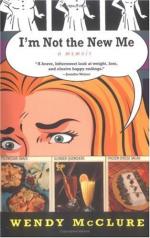It is much better for amateurs to begin with a kite designed to fly in strong winds, as it is a long and delicate task to learn to manage the variety with extra wide cross-stick meant for ascension in calms. The two sticks which form the skeleton should be of equal lengths, say six feet; and should cross each other at right angles at a point on the upright stick eighteen per cent. of its length below the top. This point of crossing is of great importance, and was only located by Mr. Eddy after months of wearisome experiment. He was misled in his earlier efforts at tailless kite-making by the example of the Malay kiter-flyers, who are reputed to be the most skilful in the world, and who cross the sticks much nearer the middle of the upright one. In a six-foot kite the two sticks, equal in length, should cross at about thirteen inches from the top of the upright stick; and the same proportion should be observed for kites of other dimensions. At the point of crossing, the sticks should be slightly notched, and strongly bound together with twine tied in flat knots. Driving a nail or screw through the sticks, to bind them, weakens the frame at the point of greatest strain.
As material for the sticks Mr. Eddy has found clear spruce better than any other wood. Bamboo is bad, because it bends unevenly at the joints. White pine is not tough enough, and cypress is both too brittle and too flexible. The hard woods, like ash, hickory, and oak, are too heavy; in scientific kite-flying, even so small a weight as a quarter of an ounce may make all the difference between failure and success. All winds are broken by frequent brief intervals of calm, and a kite must rely on its lightness to outride these. Whoever contemplates going seriously into kite-flying will do well to provide himself with a store of suitable sticks by purchasing a straight-grained, well-planed spruce plank, free from knots, and having it sawed on a circular saw into sticks five-sixteenths and seven-sixteenths inches in thickness, to be cut later into such lengths as he may choose.
[Illustration: Frankfort Street. PHOTOGRAPHIC VIEW FROM A KITE.
From a photograph taken from a kite by Mr. W.A. Eddy. This view also is of New York City about the crossing of Frankfort and William Streets. The high wall on the right of Frankfort Street is the back of the “World” building; the high wall on the left is the back of the “Tribune” building.]
The two sticks (there are never more than two) having been fastened firmly together, the cross-stick must be sprung backward; so that, when finished, the kite will present a convex or bulging surface to the wind. It might be imagined that a concave surface to the wind would be better; and indeed this has been tried. But it has invariably proved that with a concave surface the kite receives too much of the breeze and becomes quite uncontrollable. The amount of spring that must be given the cross-piece is in proportion to its length, Mr. Eddy’s rule being to spring the cross-stick, by means of a cord joining the two ends like a bow, until the perpendicular between the point of juncture of the two sticks and the centre of the cord is equal to one-tenth of the length of the cross-stick, or a little more than one-tenth, if the kite is to be flown in very high winds.




